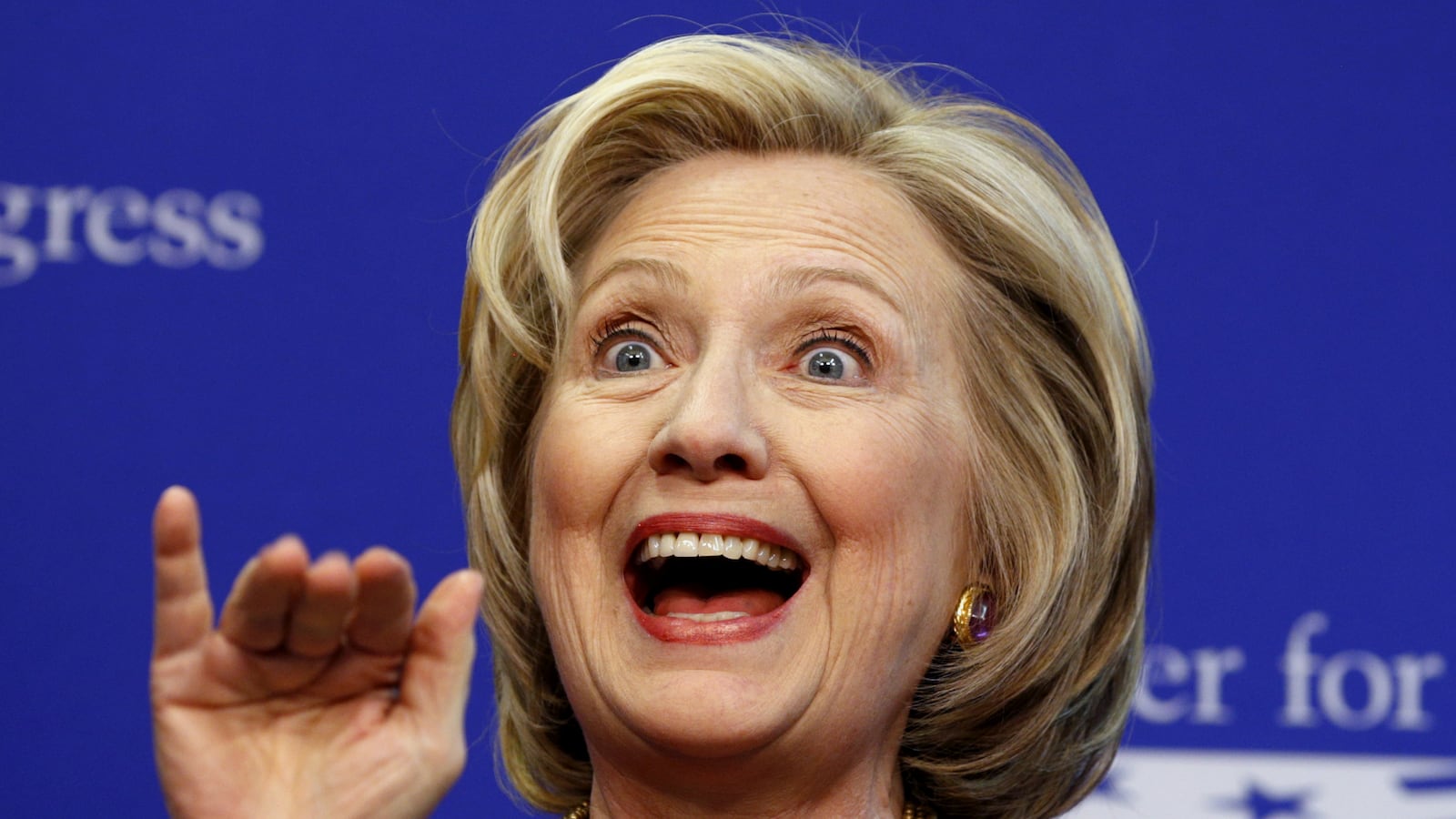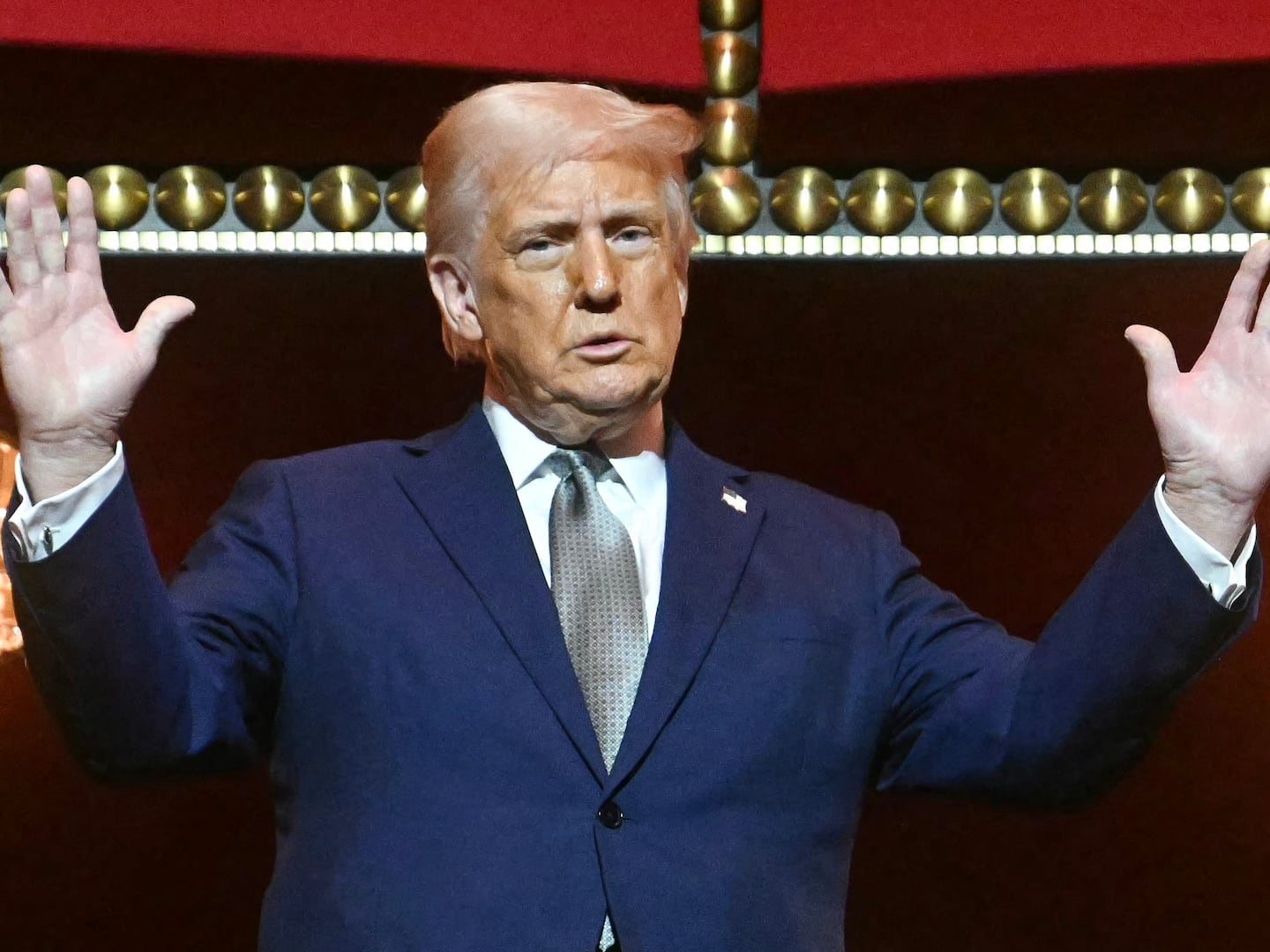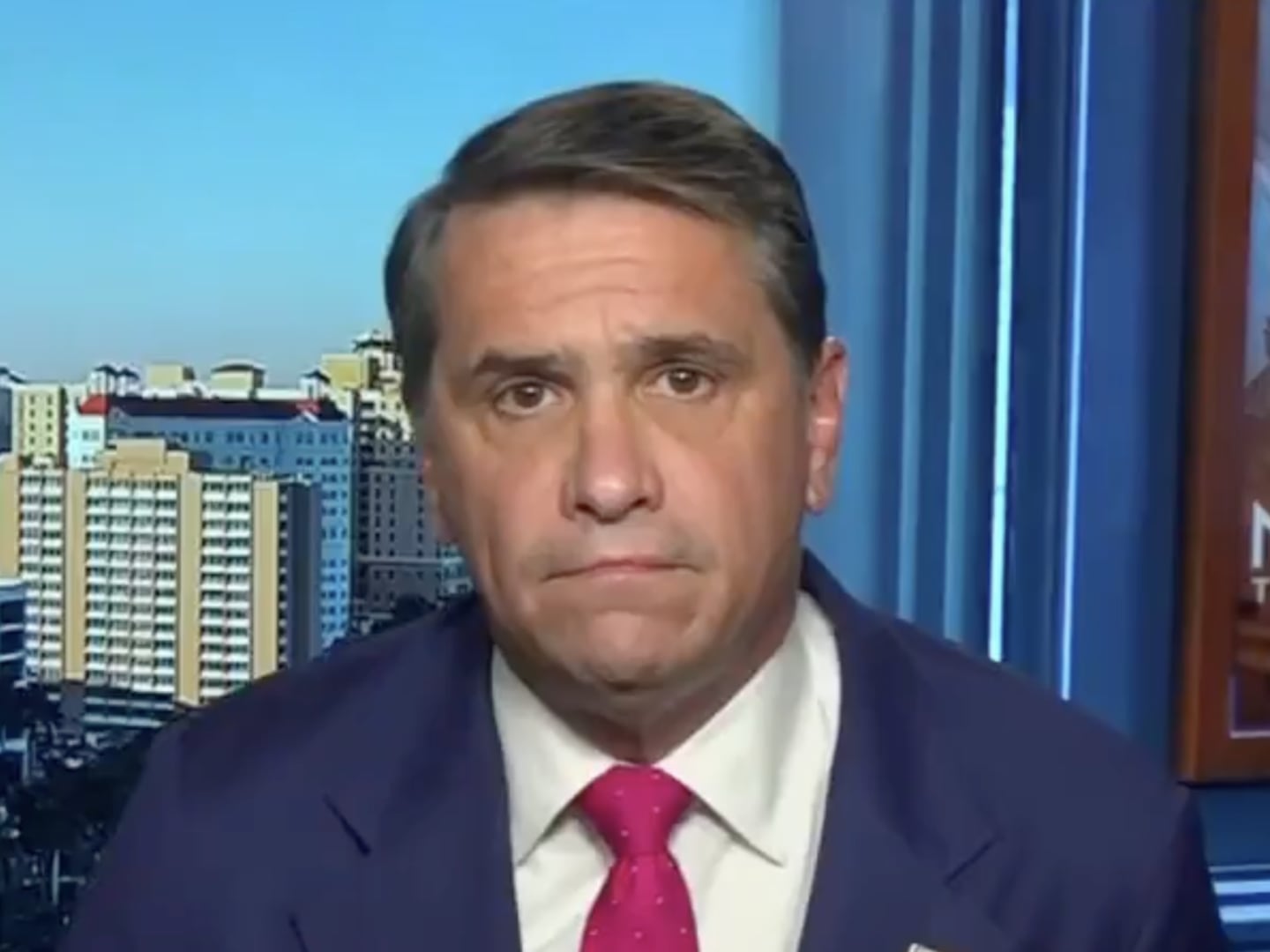Running for president frequently involves the unnatural pursuit of the natural. It’s like trying to choose a spouse through the Miss America Pageant or The Bachelor. How do you begin to get a sense of what someone is really like through an oddly ritualized process that seems to inevitably embarrass everyone?
Why do we this? Why do we force candidates to try to look natural when engaged in activities that are preposterously ridiculous? There’s Hillary Clinton sitting in a neighborhood coffee shop talking to three young Iowans—watched by a media “pool” who are just a small percentage of the huge media flock trailing the former Secretary of State. Yes, talking to young voters can be casual and natural; so can having sex. But when it happens on the fifty-yard line of the Homecoming game, it becomes a different sort of thing. And then, of course, the “young voters” aren’t really “regular” voters but Democratic party activists who have been carefully vetted and driven to the events like, well, talent. Which is what they are.
Who’s being fooled by these most insincere attempts at sincerity? The press surely knows it’s ridiculous. Does anyone really believe that a single Iowan sees this on television and thinks, “Oh, how nice, Mrs. Clinton just happened to be having coffee with these young people.”
Please. This is one of the most sophisticated political markets in America. So many presidential candidates have spent serious time in Iowa that if you don’t have a picture of you and a future president hanging in your living room, John Edwards can probably file a discrimination suit on your behalf.
But phony as they are, we’re likely to see many variations of the Hillary coffee shop moment repeated by other candidates, though it’s doubtful that many will be as staged as to recruit and vet the participants.
I’m sympathetic to the instinct. The one thing a campaign does control—in theory—are events of its own planning and execution. Inevitably there is a natural human tendency to try to over-control that which you think you can. Campaigns are a study in controlled chaos. On any given day, a campaign is likely to be dealing with some wacky or worse thing a supporter has said, economic numbers that could be good or bad depending on the spin, any number of angry news outlets who feel they haven’t been treated fairly and probably an equal or greater number the campaign believes has treated it unfairly, surrogates who want remarks carefully scripted by top policy gurus or surrogates who refuse to consider remarks crafted by top policy gurus. And then there are the random issues that always crop up, like trying to track down exactly who got food poisoning at that fundraiser when the shrimp seemed to have been a bit off.
So you don’t have to be a total control freak to just want one simple event to go off smoothly. No surprises. Follow that breadcrumb trail very far and the next thing you know you are interviewing potential coffee shop talent and driving them to the event. It all makes sense at the moment. Like Iran-Contra. We’ve got guns. They’ve got hostages. Why not?
But why this obsession with presenting inauthentic authenticity? What does this quality we seem to value so much in today’s political marketplace have to do with being a great president? It’s difficult to imagine a more inauthentic president than John Kennedy, with his double and triple hidden lives. Was Franklin Roosevelt, who tried to mask the defining reality of his physical life, “authentic”? Then again, try to imagine FDR handling the Hillary coffee shop set piece without wincing. Should that have been held against him as a potential president?
The truth is that every campaign struggles with how to campaign. In 2008, Barack Obama was a rare speaker who could draw rare crowds and the campaign wisely played to his strength. But by 2012, it was more difficult to repeat that magic and there were the awkward, inevitable crowd-size comparisons to 2008.
In the 2012 primary, Mitt Romney focused on the economy and we tried, when possible, to have events at settings that drove an economic message: small businesses, factories, job incubators. When we got away from that, we often stumbled, like a disastrous, half-empty event in a soulless convention hall in the South Carolina primary.
The scene of reporters chasing after Hillary Clinton’s luxury van—what CNN’s Peter Hamby deftly labeled “the running of the reporters”—was a terrible omen for the months ahead. In a time of fewer reporters with fewer resources, my plea to the media would be to focus less on spending time with candidates and campaigns and more with voters. Don’t worry about trying to get something new out of multimillion (or billion)-dollar enterprises dedicated to denying them that novelty.
It’s a self-defeating cycle: Campaigns try to control everything, reporters resent that control, and campaigns resent that resentment. Out of it often comes the almost unavoidable magnification of the trivial—what one random voter said or what a candidate ate or didn’t eat or what dangling participle was mangled in a speech everyone has heard a million times.
Candidates mostly try to be boring and predictable—that’s called message control—and, more often than not, they are pretty good at achieving that goal. But the good news is that candidates won’t decide this election—voters will. In an ever DC-NYC centric media world, it’s never been more critical to spend more time with voters. Journalists can watch the candidates and their staged events from phones or computers while spending serious face-to-face time with real voters. Yes, I know, many reporters do this now and that’s a good thing. I’m not suggesting anything radically new but praising those who do and gently encouraging the trend to do more.
To me, it’s like war reporting. Being with a candidate is like reporting from the Pentagon or inside a big U.S. base. Worthwhile? Of course. But the great stories, the ones who help us understand what we don’t, are out there, waiting to be told. And best of all, no campaign can try to tell you what to do.






